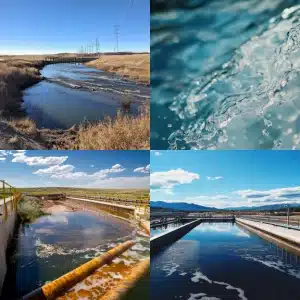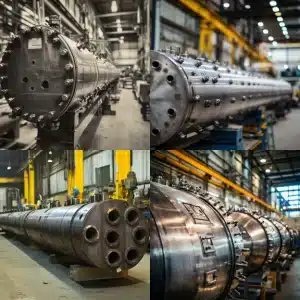
The Difference Between Piping Systems and Pressure Vessels is crucial for safe and efficient industrial operations. Proper classification ensures compliance with ASME standards, prevents costly mistakes, and minimizes operational risk. Pressure vessels are designed to hold pressurized fluids safely, while piping systems transport fluids under less stringent conditions. RedRiver LLC provides expertise in designing and classifying pressure vessels to meet safety and performance requirements. Understanding this distinction helps maintain system integrity and operational efficiency.
Understanding the Difference Between Piping Systems and Pressure Vessels
When managing industrial systems, understanding the difference between a piping system and a pressure vessel is critical for ensuring safety, compliance, and operational efficiency. Knowing whether your piping system qualifies as a pressure vessel can prevent costly mistakes and legal issues. So, how do you distinguish between the two? Let’s break it down.
What Is a Pressure Vessel?
A pressure vessel is any container designed to hold gases or liquids at pressures significantly different from the surrounding atmosphere. These vessels must comply with strict regulations and adhere to ASME Section VIII standards for safety and durability. At Red River, we manufacture these vessels to meet the precise needs of industries like oil and gas, power generation, and biogas. Our pressure vessels are crafted for maximum reliability and built to exceed safety standards.
What Is a Piping System?
A piping system consists of a network of pipes designed to transport fluids from one location to another. Unlike pressure vessels, piping systems typically don’t require the same stringent classifications unless they handle extreme conditions, such as high pressures, temperatures, or hazardous materials.
For industries like oil and gas or mineral extraction, recognizing when a piping system must meet pressure vessel standards is crucial. This understanding ensures safety, compliance, and smooth operations.
Why Proper Classification Matters
Proper classification isn’t just a matter of ticking regulatory boxes; it’s about ensuring the safety of your team, the efficiency of your operations, and protecting your investment. Misclassifying a pressure vessel as a piping system or vice versa can lead to severe operational failures, costly fines, or worse, catastrophic accidents.
That’s where we come in. At Red River, we don’t just build pressure vessels we partner with you to ensure your system is classified correctly, adheres to the highest safety standards, and performs exactly as needed. Whether you’re wondering how to determine if your piping system qualifies as a pressure vessel or you’re looking for custom fabrication, Red River is the name you can trust.
Key Indicators That Your Piping System Should Be Classified as a Pressure Vessel
Indicator 1: Operating Pressure and Temperature
If your system operates under high pressure and temperature, it may need to be classified as a pressure vessel. When operating pressures exceed safe limits, even a small mistake can lead to significant damage or accidents. In these cases, pressure vessel classification ensures enhanced safety and compliance.
Indicator 2: Volume Capacity
The volume capacity of your system can also determine if it qualifies as a pressure vessel. Larger systems that store a considerable amount of gas or liquid at high pressure are more likely to require this classification due to the increased risk of energy release.
Indicator 3: Stored Energy
Systems that store large amounts of energy pose a higher risk of catastrophic failure, especially under extreme conditions. These systems are often classified as pressure vessels to ensure they meet the highest safety standards.
Indicator 4: Fluid Type and Hazard Level
The type of fluid especially if it involves hazardous gases or liquids is a critical factor. If your system handles dangerous substances, pressure vessel classification ensures it meets stringent safety requirements.
Indicator 5: Compliance with ASME Section VIII Standards
Lastly, your system must meet ASME Section VIII standards for it to be classified as a pressure vessel. These standards set strict guidelines for safety, construction, and testing.
Difference Between Piping Systems and Pressure Vessels
Understanding the Difference Between Piping Systems and Pressure Vessels is critical for safety, compliance, and efficiency. Pressure vessels are purpose-built to handle extreme pressures, temperatures, and hazardous fluids, while piping systems primarily transport fluids. Correct classification, proper material selection, and adherence to ASME standards ensure reliable performance and reduce risk. RedRiver LLC delivers custom pressure vessels designed for long-term operational safety and regulatory compliance.
Work With RedRiver LLC
Red River specializes in the design and manufacturing of pressure vessels. We also fabricate related items such as prefabricated spools and skid packages.
Reach Out to us today and experience the Red River difference. Where American Made and American Values come together, we care more.
Frequently Asked Questions
1. What qualifies a piping system to be classified as a pressure vessel?
A piping system may be classified as a pressure vessel if it operates under high pressure, high temperature, stores large amounts of energy, handles hazardous substances, or meets ASME Section VIII criteria.
2. What are the risks of not classifying a pressure vessel correctly?
Improper classification can lead to equipment failure, safety hazards, costly fines, and operational downtime. Non-compliance may also result in legal consequences.
3. How does the type of fluid in the system affect its classification?
Hazardous fluids like flammable, toxic, or corrosive substances require stricter safety standards, making pressure vessel classification essential.
4. Why is ASME Section VIII important for pressure vessel classification?
ASME Section VIII provides standards for design, fabrication, testing, and certification, ensuring pressure vessels operate safely and reliably.
5. Can a piping system be upgraded to meet pressure vessel standards?
Yes. Upgrades may include reinforcing structures, changing materials, adding safety features, and ensuring ASME compliance. Specialist evaluation is recommended.
Key Takeaways
- The Difference Between Piping Systems and Pressure Vessels ensures safety, compliance, and efficiency.
- Pressure vessels are designed to handle extreme pressure, temperature, and hazardous fluids.
- Proper classification prevents operational failures and legal risks.
- ASME standards guide safe design and maintenance.
- RedRiver LLC delivers customized, compliant pressure vessels for industrial applications.
Related Blog Post
- Pipe Thickness in Pressure Vessels: Why It Matters for Safety and Reliability
- Understanding the Difference Between Pipes and Pressure Vessels
- Pressure Vessel and Pipe Testing
- Pressure Vessel and Pipe Testing
- Pressure Vessels vs Piping Systems Cost
- Understanding the Differences Between Pipes and Pressure Vessels




